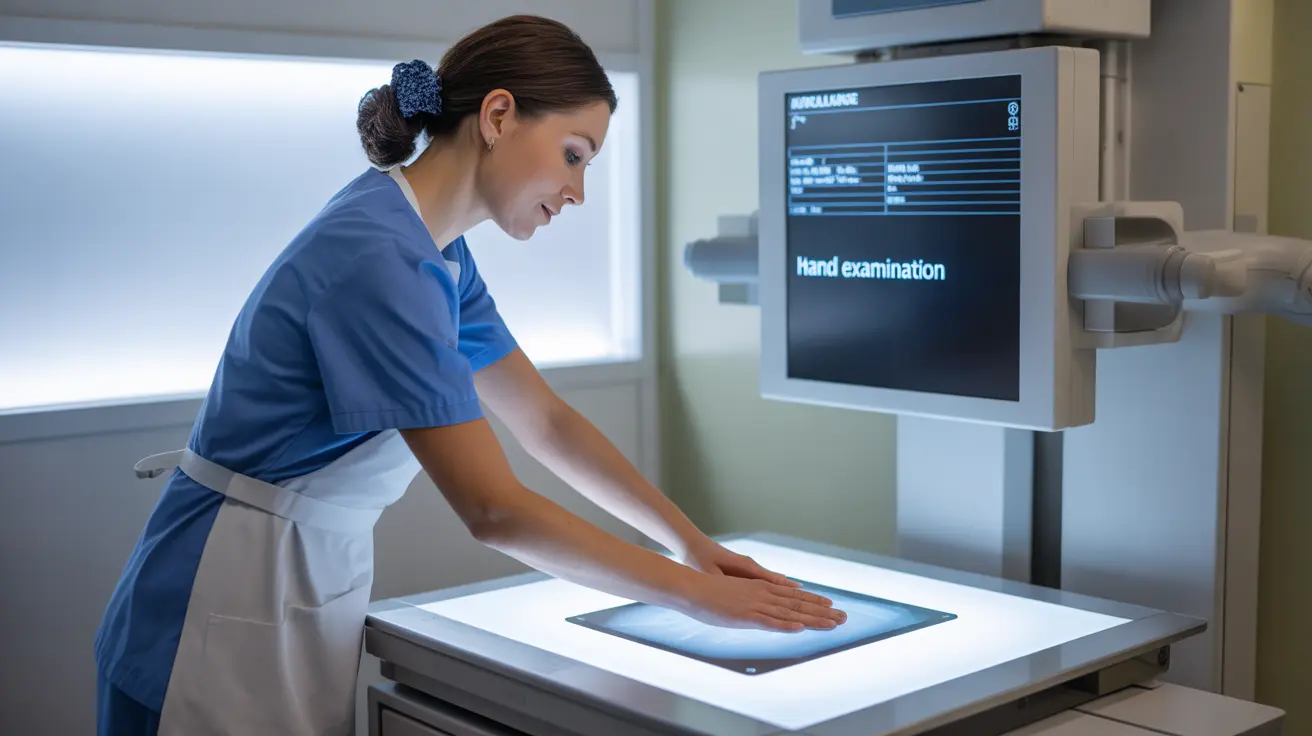Hand X-rays are valuable diagnostic tools that help healthcare providers examine the bones, joints, and soft tissues of the hand. These medical imaging tests use low doses of radiation to create detailed pictures that can reveal injuries, diseases, and various conditions affecting the hand's structure.
Whether you're scheduled for a hand X-ray due to an injury, chronic pain, or as part of ongoing treatment monitoring, understanding what to expect can help you feel more prepared for the procedure. This comprehensive guide will walk you through everything you need to know about hand X-rays.
Purpose and Medical Applications
Hand X-rays serve multiple diagnostic purposes in modern medicine. Healthcare providers commonly use these imaging tests to:
- Diagnose fractures and bone breaks
- Identify signs of arthritis or joint damage
- Monitor bone growth in children
- Evaluate bone density
- Detect foreign objects
- Track healing progress after treatment
Preparing for Your Hand X-ray
Preparation for a hand X-ray is typically straightforward and requires minimal effort. However, there are some important considerations to keep in mind:
Before Your Appointment
Taking these steps can help ensure a smooth examination:
- Remove all jewelry from your hands and wrists
- Inform your provider about any recent injuries or surgeries
- Mention if you're pregnant or might be pregnant
- Wear comfortable clothing that's easy to adjust
During the Procedure
The X-ray process itself is quick and painless. You can expect the following:
- The technologist will position your hand on a special plate
- You may need to hold your hand in different positions
- The actual imaging takes only a few minutes
- You'll need to remain still during the exposure
Safety and Radiation Exposure
Hand X-rays are considered very safe diagnostic procedures. The amount of radiation exposure is minimal, equivalent to a few days of natural background radiation we receive from our environment. Medical facilities follow strict protocols to ensure radiation exposure is kept as low as reasonably achievable (ALARA principle).
Results and Interpretation
After your hand X-ray, the images will be carefully reviewed by a radiologist. The interpretation process typically includes:
- Detailed examination of bone structure
- Assessment of joint spacing
- Evaluation of soft tissue abnormalities
- Comparison with previous X-rays (if available)
Frequently Asked Questions
What conditions can a hand X-ray diagnose or help monitor?
Hand X-rays can diagnose fractures, arthritis, bone infections, tumors, and developmental abnormalities. They're also useful for monitoring healing progress after injuries or surgeries and checking for proper bone alignment.
How should I prepare for a hand X-ray appointment?
Remove all jewelry from your hands and wrists, wear comfortable clothing, and inform your healthcare provider about any possibility of pregnancy. No special dietary restrictions or medication preparations are typically needed.
Is getting a hand X-ray safe, and how much radiation exposure does it involve?
Hand X-rays are very safe, using minimal radiation doses. The exposure is equivalent to a few days of natural background radiation. The benefits of diagnostic information typically far outweigh any minimal risks.
What is the typical procedure during a hand X-ray, and how long does it take?
The procedure usually takes 15-20 minutes total, with actual imaging lasting only a few minutes. You'll need to position your hand on a special plate while the technologist takes several images from different angles.
When will I receive the results of my hand X-ray, and how are they interpreted?
Results are typically available within 24-48 hours. A radiologist will analyze the images and send a detailed report to your healthcare provider, who will then discuss the findings with you during a follow-up appointment or consultation.




